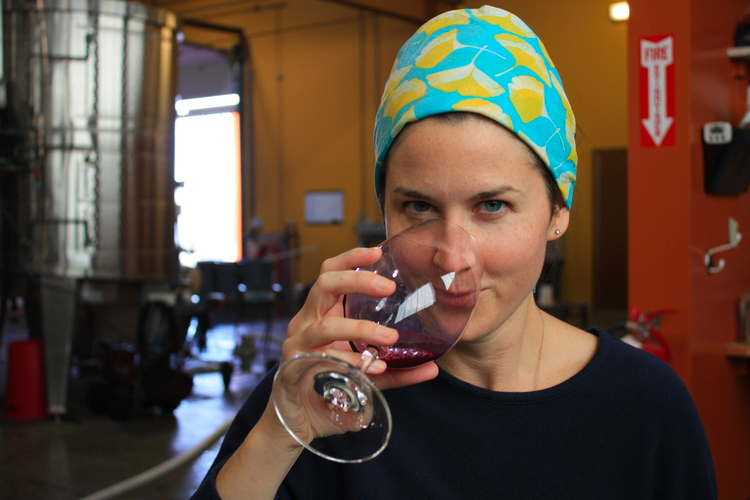At Ponzi Vineyards in the Willamette Valley, the scene is a little different and one that’s inspiring the entirety of the industry. Established in 1970 and one of Oregon’s oldest labels, Ponzi is also women-run, by a pair of sisters in winemaker Luisa and winery president Maria.
Presently, the label estimates that women make up about a third of staff, an impressive number given the prevalent norms that continue to grip the industry. Maria Ponzi says the outfit has been very active in mentoring young women, organizing groups, and opening doors for a vast and underrepresented demographic.

“We often find ourselves as the only woman in the room, on a panel or in a tasting,” Maria says. “We have proudly hired women to work for us in all areas, from the vineyard to the cellar to office and sales.”
A proud sister, Maria says Luisa is the first American woman to be awarded the Certificate Bevet Professionelle D’Oenologie et Viticulture. Thanks to continued innovation in the winery and vineyard, along with outstanding wines — including a devout devotion to local Chardonnay that greatly predates the current trend — Ponzi is poised to continue being a beacon on the hill, even as it enters its third generation.
“When Luisa returned to the winery in 1993, there were only two female winemakers and today about fifteen percent of the winemakers in Oregon are women so that’s amazing progress,” she says. “The scene in changing.”
“The wine industry continues to be male-dominated and we hope to level the playing field and set an example for other hopeful future female leaders of wine.”
Fortunately, the Ponzi crew are being joined by many vital female figures in wine who are shifting the landscape for the better. A lot has changed in the last fifty years, as evidenced by prominent groups like Women for Winesense and gatherings like WWLS, but there’s so much left to do to balance the scales. Here are some of the most influential women in the field, working to not only bring great wine to the masses but equality to the field.
Madeline Triffon
View this post on Instagram
Triffon was the first woman master sommelier in the country, named as such in 1985. At the time, she was only the ninth American and second woman on the planet to pass the rigorous MS test. Dubbed “Detroit’s first lady of wine,” Triffon has gone on to inhabit an array of high-end roles, from director of wine and beverages for the Unique Restaurant Corporation to somme at popular midwest organic chain Plum Market. Triffon continues to serve on the board of the Court of Master Sommeliers.
Pauline Lhote
View this post on Instagram
French-born Lhote is the director of winemaking at the highly visible Chandon label in California. Created in the early 70s, Chandon is one of the first French sparkling wine houses on American soil. Lhote knew she wanted to craft bubbly as early as when she was a teenager, not entirely surprising given that she grew up in the company of vineyards in Champagne. In California, she climbed the latter from intern to assistant winemaker to vintner and is now responsible for the some of the iconic sparkling in the U.S. More impressive still is that Lhote is still just in her mid-30s. It’ll be fun to see what she does in wine next.
Susan Sokol Blosser

Another powerhouse Oregon player in the wine game is Susan Sokol Blosser. She helped plant a winery flag in the Dundee Hills in 1970, when only a few intrepid minds were doing so. Like Ponzi, the second generation has since taken over at Sokol Blosser Winery, but Susan remains a towering force in American wine. Her storied career at the winery included vineyard manager (1980-1990) and then president up until 2007. Throughout, the label has been highly respected for its sustainability efforts, erecting the nation’s first LEED-certified winery in 2002. Over the years, Susan has wielded her influence beyond just wine, leading thoughtful political campaigns, pushing for environmental sensitivity and education in farm country, and even authoring some related books.
Anna Schafer

Anna took over the winemaking reins at àMaurice as a twenty-something. The award-winning Walla Walla winery is one to watch, led by a talented vintner who splits her time between the cellar and the vineyard. She brings tremendous experience to her craft, having visited nearly 40 nations and worked harvests in places like Mendoza, Argentina. Her wonderfully engineered Rhone varieties like Syrah, Viognier, and Marsanne — along with some worldly types like Malbec — are adding to an already incredible Walla Walla wine scene that will only get better with age.
Alpana Singh

As the youngest women to be named master sommelier (at age 21), Singh hit the wine floor running. The second-generation Indian American was raised in California and has since amassed an impressive resume, advancing the role of women in the arena en route. Singh has done it all, from food show host to author to columnist to wine-centric restaurant founder. Industry peers have long admired her for her approachability and education-first mentality when it comes to wine. She’s been in charge of prominent restaurant wine programs (like Everest) since she was 23, is still very involved in the restaurant and service realm, and is largely viewed as the force that brought the James Beard Awards to the Windy City a few years back.


